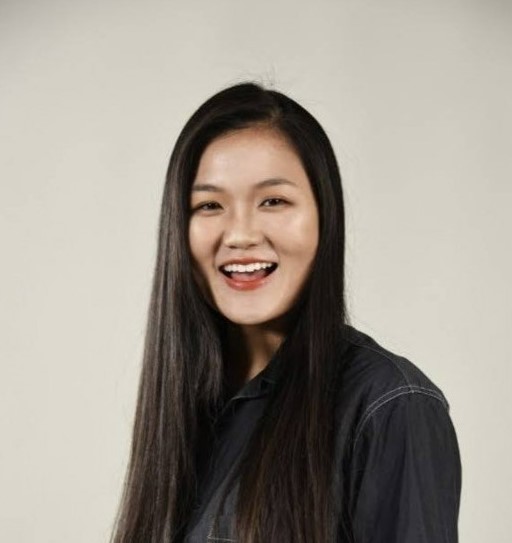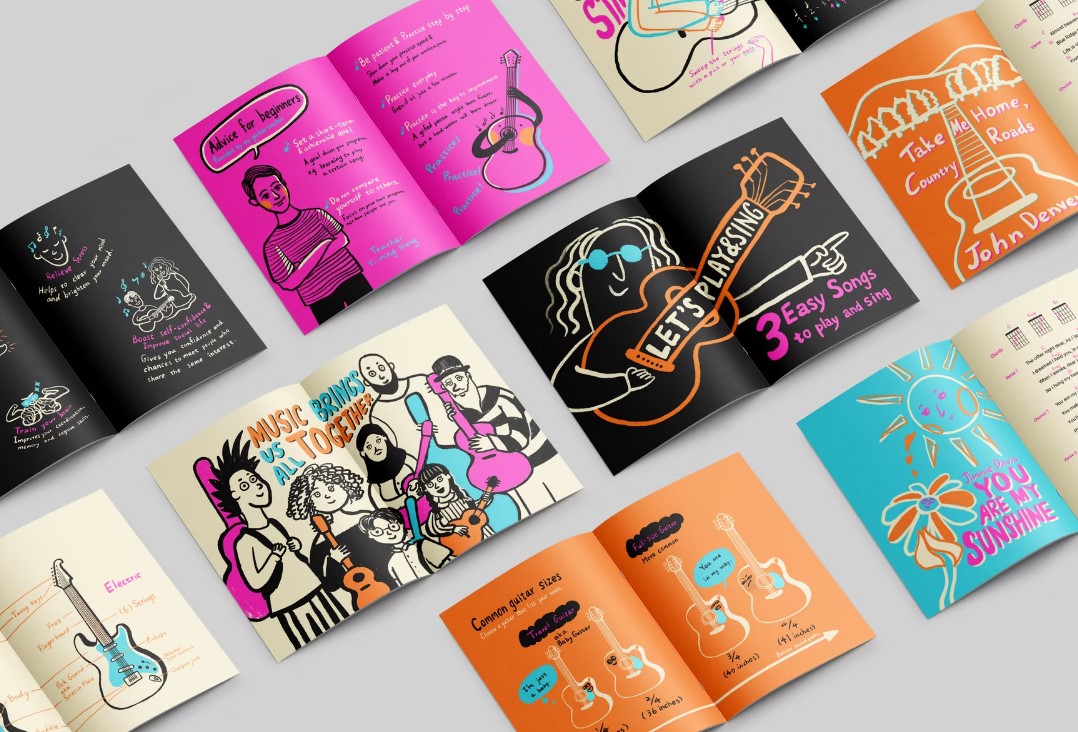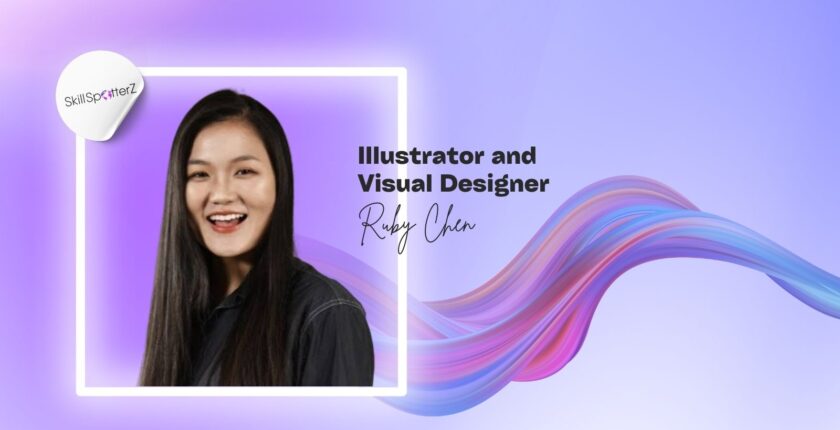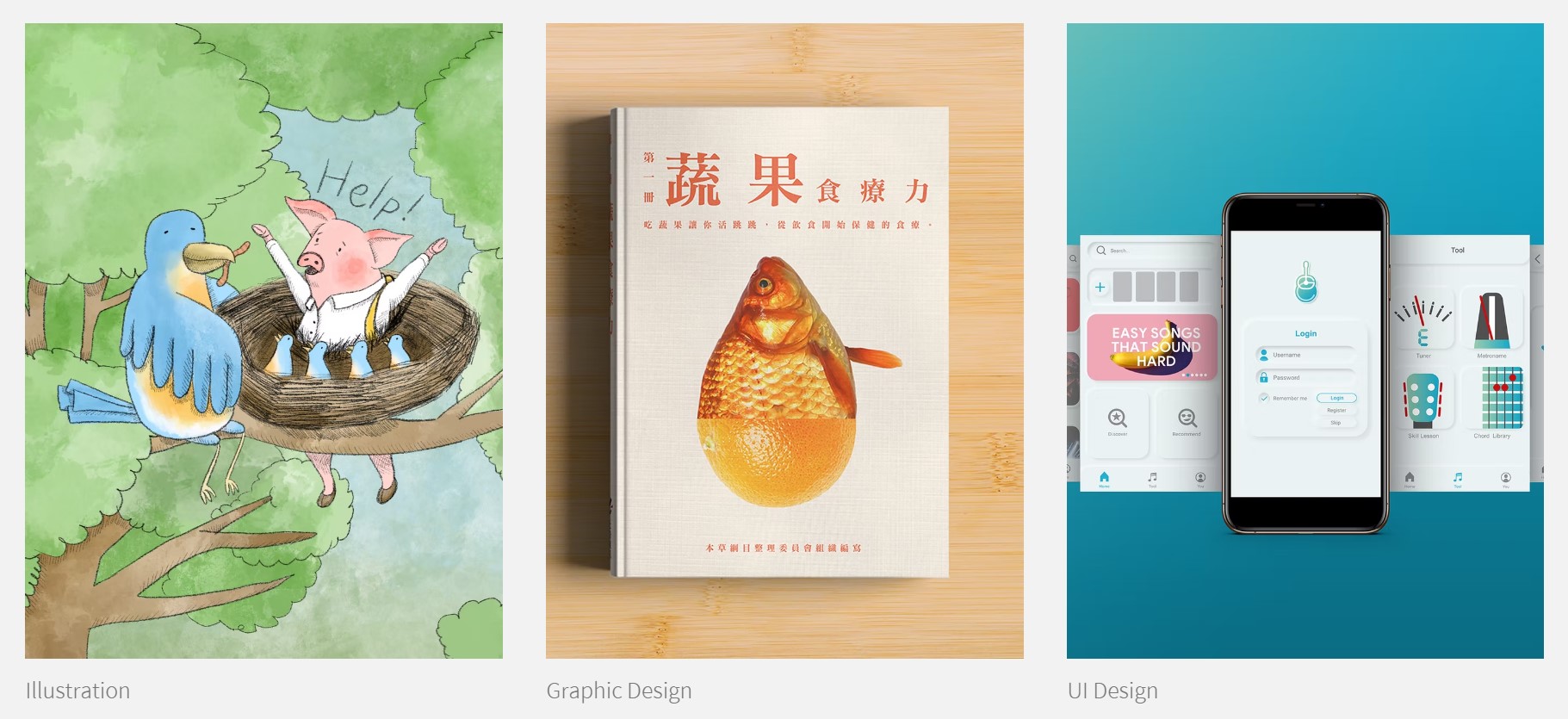How Freelance Visual Designer and Illustrator Turned Creativity into a Career — and Worldwide Recognition
In the crowded world of design, what makes one illustrator’s work impossible to ignore?
Meet Ruby, Ruby’s Creative Story — From Taiwan to the United Kingdom.

This month’s spotlight is on Ruby Chen, an experienced Freelance Visual Designer & Illustrator.
She is an award-winning Designer and illustrator. Ruby has been recognized for her distinctive style and impactful visual storytelling.
Beyond her creative work for clients worldwide, she has dedicated part of her journey to teaching and mentoring aspiring creatives, helping the next generation sharpen their skills and find their voice.
In this interview, Ruby shares the milestones that shaped her career, the lessons she’s learned from both success and setbacks, and her insights on thriving in the ever-evolving and competitive world of design.
Check out Ruby’s profile on SkillSpotterZ and let’s dive into the kind of insight we don’t hear so often.
At SkillSpotterZ, we spotlight creative minds like Ruby, in order to help Companies and Remote Talent grow together and hear real talk and insights about the industry.
💬 Who is Ruby, behind work, career, and freelancing?
Hello, I’m Ruby, a Taiwanese visual designer currently living in the UK.
I enjoy simple pleasures and cozy indoor activities like experimenting with new makeup techniques and watching cartoons (my favorites are Bojack Horseman and Ugly Americans). I’m also a bit of a foodie, which has inspired me to develop some decent cooking skills so I can recreate the flavors I miss from home.
From Intern to Agency Designer.
💬 Looking back, how important was your internship at Garmin and early freelance experience in building a foundation for where you are now?
I’m grateful to have started my career with an internship and later freelance work at a large, well-established company like Garmin.
That experience gave me a strong foundation, not just in UI design skills and knowledge, but in learning how to collaborate with a team and work through real-world projects – things university couldn’t fully prepare me for.
It also helped me develop a clearer sense of what I value in clients and companies, and shaped my standards for the types of projects and teams I feel more aligned with.
💬 For someone without experience in creative design or illustration, where should they realistically begin?
As the saying goes, “dress for the job you want”, and I believe that applies to the creative industry too.
You can start by creating mock projects that reflect the kind of work you hope to do.
This helps you build your skills while also showing potential clients that you’re capable of delivering the kind of work they’re looking for.
For example, I’m currently working on a self-initiated editorial illustration series, with the goal of using it to create opportunities for similar projects in the future.
💬 What would you say to someone who’s afraid of doing “free” work, volunteering or internships — is it worth it?
I’d definitely recommend that new grads and students consider internships or volunteer opportunities.
I know unpaid or low-paid work can feel unfair, but these experiences are a great way to gain practical knowledge and learn how things work in the industry.
Volunteering is also a great way to support organisations that align with your personal values while building your experience, like dealing with clients and understanding project briefs.
The experiences and connections you build through internships and volunteering can add great value to your resume and open doors to future opportunities.
Getting Clients & Staying Visible as a Creative.
💬 What helped you find freelance clients in the beginning, and what works now?
Most of my current freelance projects come from previous employers I worked with full-time and later continued collaborating with as a freelancer.
Some clients find me after seeing my work on printing or freelance platforms, or through referrals from people in my network.
I’m still actively working to find new sources of projects and hope to take on more diverse work across different industries.
As I mentioned earlier, I’m currently focused on building up my portfolio with editorial illustrations to open doors to similar opportunities.
💬 You have a personal website and also share your work on Instagram.
How important is it for creatives to build their own visibility online?
Having an online presence is a must for creatives these days.
Social media makes it easy for people to quickly browse through your work.
Its large user base means more chances to be seen, and it’s also a great way to interact with your audience.
For me, a personal website is a place to showcase more polished projects and explain the concepts behind them in more detail.
It’s especially helpful when sharing your work with potential clients or employers, as they can explore it more thoroughly.
It also gives creatives the freedom to customise everything to suit their own style and needs.
💬 Do you believe in “soft selling” as a designer? How do you approach it?
I do think soft selling suits me better, especially since I’m more on the introverted side.
I focus on building trust rather than making a hard pitch, by communicating clearly and showing that I understand each client’s needs and what their brand is about.
This approach has helped me form strong, long-term relationships over time, and showing that kind of understanding also can be effective when working with new clients.
💬 What makes a designer stand out to clients, in your opinion? What do clients really care about?
I believe understanding the design brief is a basic expectation clients have of any designer.
I try to stand out by offering both a safe option– something they probably had in mind when writing the brief- and a bolder, more unexpected idea that pushes the project further while still fitting their needs.
For example, I designed a character for an environmental ethics foundation, which is a pretty traditional sector.
Yet they still chose my proposal because they felt the cute and funny character could be a better way to introduce this creature to audience than a strictly anatomically accurate design.
Design Tips, Trends & Tools for Creative Freelancers.
💬 What are some techniques or tools you regularly use in your creative process?
I usually start my creative process with pencil drafts or mind maps on paper to get my ideas flowing.
After that, I move to digital tools like Adobe Creative Suite or Procreate to refine and finalize the designs.
I also like to draw with different materials in my sketchbook to capture some life moments or ideas.
💬 What design trends are you currently excited about — and what should freelancers not blindly follow?
I’m quite excited about zero-waste design.
I think it’s important for designers to find ways to reduce environmental impact while still making life more visually engaging.
It’s also nice to see more companies taking sustainability into account, whether that’s through eco-friendly materials, smarter digital solutions, or sustainable printing methods.
On the other hand, while ultra-minimalism can be really effective for certain projects (especially when you want a clean, neutral feel), I wouldn’t want to use or see it applied to everything.
It can sometimes feel too empty or lack warmth and personality, depending on the context.
💬 You’ve won design awards and also work on medical and anatomical illustrations. How do you keep your creativity fresh across different formats?
For me, switching between different types of projects already helps keep things feeling fresh.
I also enjoy the research process, such as learning about medical topics, gathering reference images, or reading up on environmental issues.
I find it exciting to absorb information and then figure out creative ways to visualise it.
Even though I am rooted in visual design, it feels meaningful to contribute to different fields in my own way.
💬 Where do you go for creative inspiration when you feel stuck?
If I have a specific goal in mind, like a certain style or format, I’ll usually turn to Pinterest for specific visual styles or specific Behance for format references, just to get a sense of what’s out there and what the expectations might be.
When I’m working on more abstract concepts, I like to create a mind map on paper to pull out key ideas or keywords that I can develop into a design.
I also look at other projects with similar themes to get a sense of what elements work well, but I make a conscious effort not to copy their visual approaches, so I can keep my own voice and originality.
💬 Your field and niche seem highly competitive for the past year. Do you see it getting better or becoming worse, and what do you tell everyone who wants to get into Visual Design and Illustration?
Yes, the field has definitely become more competitive, especially with the rise of AI, some companies have chosen to back on professional design work because of it.
But I still believe that designers and illustrators who bring their own passion and unique strengths to the table can really stand out and stay relevant.
If you’re genuinely interested in design or illustration, I’d still say go for it!
It might be competitive, but creative work can be incredibly rewarding in ways that many other jobs aren’t.

Ruby as a Teacher: Lessons from the Classroom.
💬 You used to be an Advertisement Design teacher.
What were the biggest lessons you learned by teaching design to others?
The experience definitely deepened my own design knowledge and skills, but more importantly, it really sharpened my communication and presentation skills.
I learned how to break down concepts clearly for both design and non-design students, from selecting real-life store examples to explain display design, to sharing templates to help them get started with their packaging design.
I also got to step into a bit of a client’s role by writing briefs for students and giving them feedback, which gave me a new perspective.
It was also really rewarding to review their work, they often came up with ideas that were fresh and surprising.
💬 What’s one thing you wish all junior designers or students would focus more on?
Set the goal and just start!
Use whatever skills and tools you have right now and aim to improve along the way.
A lot of ambitious creators hold back because they’re scared their first try won’t be perfect.
But honestly, you only get better by actually doing it.
Even if your first attempt isn’t quite what you want, it is a chance to spot what needs fixing and refine the details.
💬 With all these new courses, academies, universities, certification- I your opinion what is the best way or route to go for someone to lear and get better in design?
Structured education can definitely help you sharpen your design skills, keep you creating, and give you valuable feedback.
If you already know you want to pursue design, choosing a relevant program can be a solid starting point.
On the other hand, even if you come from a different background, it’s absolutely possible to get into the design field.
Tools and software can be picked up relatively easily thanks to the many free and paid resources out there.
What takes longer is developing a strong visual sense, it’s effective to actively observe and analyse other people’s work.
Don’t just scroll through a bunch of designs; take the time to look closely and ask yourself what makes something work, and how the ‘engaging feeling’ was achieved.
Most importantly, keep practicing.
The Power of Bilingual Creativity.
💬 You’re bilingual in Mandarin and English. Do you feel that’s given you an edge as a creative?
I think so. I usually think in my mother tongue (Mandarin), but switching between languages does shift the way I process ideas.
Sometimes, a thought just comes more naturally in one language than the other.
That flexibility sort of helps me look at things from different angles and can lead to more creative ideas.
I also suggest creatives try searching in a different language when searching for resources or inspiration to get broader and more diverse results.
💬 How can freelancers use their language skills to create more opportunities?
Speaking more than one language can definitely open up more opportunities as a freelancer.
It allows you to work with clients from different countries, connect with professionals around the world.
Clients often see it as a big plus if you can speak (or even just understand the basics of) the language of their target audience uses as you are more likely to understand the cultural nuances and produce more effective designs.
For example, a Dutch company once hired me to help with design work for their expansion into Taiwan, and my language skills definitely helped me stand out.
I’m also looking forward to participating in more international projects through SkillSpotterZ.
Personal Passions: Singing & Staying Creative.
💬 We saw your Mandarin song covers on YouTube — such a beautiful voice! Is singing a way for you to recharge creatively?
Thank you! I’ve always loved music, and singing lets me express creativity from a different angle.
Recording these Mandarin oldies is my way of interpreting and connecting with them in a personal way.
It’s also a nice way to keep my creativity flowing in a different form outside of design.
💬 How important do you think it is for creatives to have a hobby that’s just for themselves?
I think having a hobby just for yourself is really beneficial, especially for creatives.
It gives your mind a break, relieves stress, and often sparks new ideas.
It’s also nice to do something purely for enjoyment, without thinking about whether it’ll make money.
I love drawing, but I’ll admit, I often think about if a sketch could be turned into a portfolio-worthy piece.
If your biggest hobby happens to be what you do for a living, that’s great, but it’s still helpful to have something that’s just for fun.
Boundaries, Burnout & Balance.
💬 As someone who’s freelanced and worked in a fast-paced agency, what are your boundaries when working with clients from the agency, and then how in individual projects and clients?
When working at an agency, I focus on clear communication with my colleagues and make sure to give regular updates on progress.
Good communication and transparency help keep everyone on the same page and prevent confusion throughout the project.
With individual clients, since they sometimes might be less familiar with the workflow, I put more focus on clearly setting and confirming expectations, from timelines and deliverables to the number of revisions allowed, so we’re all aligned from the start, which helps the collaboration down the line.
💬 What helps you maintain balance and avoid burnout as a creative?
To avoid burnout, I find it helpful to have activities that take my mind off work, like making music covers, watching movies, or reading books.
I also try to limit mindless scrolling since it makes me a bit anxious and feels like I waste too much time.
Setting clear working hours or having a dedicated workspace is important too.
As a freelancer, the line between work and home can get blurry, so having a set time to stop working helps me disconnect from stress and improves my mental health.
💜 What’s one lesson, mindset, or mantra you keep coming back to in your design career?
Having worked in design for a few years, I hope to always stay open-minded and curious, reminding myself that done is better than perfect, and using the momentum from completing a project to improve it step by step.




